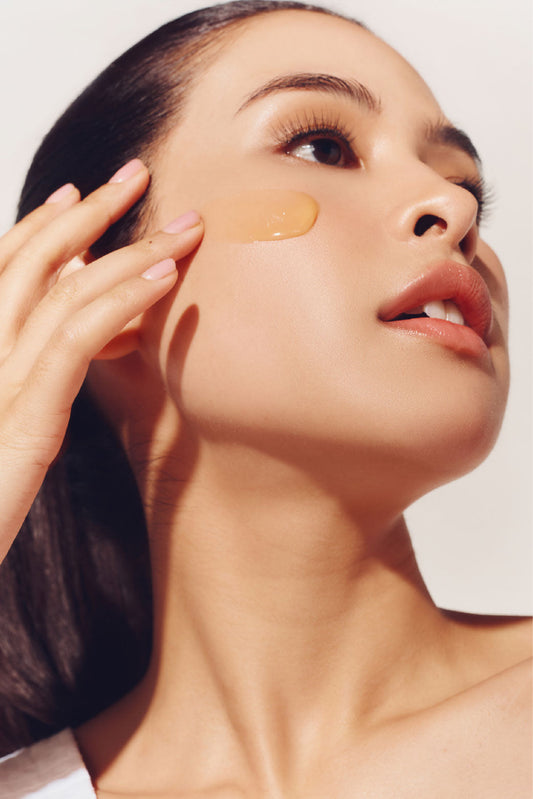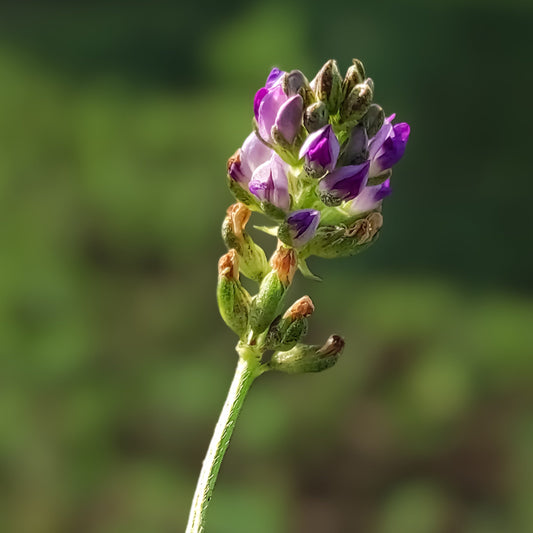Peptides have become a quiet star in skincare. Known for their firming, hydrating, and barrier-repairing properties, they’re often recommended for anyone looking to plump tired skin or smooth fine lines — especially those who find stronger actives too harsh.
That’s why you’ll find peptides in many moisturizers, eye creams, and serums today including our Papua Red Fruit Plumping Cream, where we paired them with nourishing botanicals to help bring skin back to life.
Here’s what peptides are, why they’re so well-loved, and how to know if they’re right for your routine.
What Are Peptides, and Why Do We Use Them?
Peptides are short chains of amino acids that help form the proteins your skin needs to stay firm and healthy. When applied topically, certain peptides send signals that tell your skin to repair itself, boost hydration, or strengthen the barrier (Resende et al., 2021).
According to a survey by Depology (2023), most users reported visible improvements in plumpness and firmness after regular peptide use — which supports why these ingredients are often found in serums and moisturizers for tired, dehydrated skin.
Studies like Zague et al. (2018) further show that collagen peptides can improve elasticity and smoothness. Because they’re often gentler than actives like acids or retinoids, they’re popular in products made for dry, tired, or reactive skin.
That’s why we included peptides in our Papua Red Fruit Plumping Cream — to support your skin barrier, restore firmness, and help lead you into your pillow skin era.
So Why Do Reactions Still Happen?
Even gentle ingredients can cause issues on certain skin types. Reactions to peptides may come from:
- A compromised or inflamed skin barrier
- The type or concentration of peptide used
- Another ingredient in the formula that acts as a trigger
A review by Resende et al. (2021) notes that peptides, while typically safe, can occasionally irritate hypersensitive skin, especially when combined with other actives like acids.
Most reactions we’ve seen involve tingling or mild redness, often around the cheeks or eye area. These effects are usually temporary, but they’re still important to acknowledge.
How We’re Listening and Improving
Since launching our Papua Red Fruit Plumping Cream, a few users have experienced irritation, particularly if they were new to peptides or using the product alongside exfoliants.
Here’s what we’re doing in response:
- Making patch test instructions easier to find on our social channels
- Providing clearer usage tips for layering peptides with other actives
- Collecting feedback from affected users so we can learn and adapt
- If You Experience a Reaction
If you feel discomfort after using a product, here’s what we recommend:
- Stop using the product
- Rinse your face with cool or lukewarm water
- Avoid all actives (like acids or retinoids) for a few days
- Use a gentle, fragrance-free moisturizer
- Reach out to us as we’re here to help
To help your skin adjust safely, we always recommend patch testing, especially when trying new actives like bakuchiol, retinoids, or peptides. Apply a small amount behind the ear or on your inner arm and wait 24–48 hours before full use.





